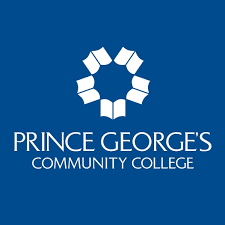
On the first and third days of October, 11th- and 12th-graders had the opportunity to take the Accuplacer exam. Accuplacer is an exam that is used to determine which classes you can take for Dual Enrollment at Prince George’s Community College. Many seniors at ERHS have taken Dual Enrollment classes before, so they know what to expect for the Spring semester, which starts on January 20. But for those choosing classes for the first time, primarily juniors, they may not know where to begin. So, The Raider Review asked seniors who have had experience with Dual Enrollment classes for tips on choosing classes and balancing them with regular school.
Tip #1: Choose classes that relate to your future
If you have a career goal in mind, great! Dual Enrollment has classes that give you a head start towards your potential career goals. If not, that’s okay too. Njambi Kamenwa advises juniors to “take classes that actually interest you,” and not to take the easy classes just for show. For example, one of the classes she took was Biology 1110, which is a class that will help her get her major in Environmental Science.
Tip #2: Stay focused on regular school
While Dual Enrollment can save you money and time when you get to college, it shouldn’t be your main priority. Jolynn Elien encourages juniors to prioritize their current high school classes over their Dual Enrollment classes. “I wouldn’t recommend taking more than 1 class,” she adds. College classes are a huge time commitment, but they shouldn’t take over your entire spring semester.
Tip #3: Stay organized
Like with your regular classes, it’s important to use your time wisely so everything gets completed before the due date. In my experience with Dual Enrollment classes—I’m taking Foundations of Communication and Music Appreciation—they offer at least a week for work to be completed before the next assignments come up. I recommend having a set schedule to work on Dual Enrollment assignments and completing them in fragments so they don’t take up too much time. Remember: your classes at ERHS hold a higher priority.
Tip #4: Know your limit
As previously mentioned, Dual Enrollment can help save money for college classes because of the number of credits each class is worth. However, there is a limit: ERHS students can take a maximum of 2 classes for Dual Enrollment. “If you know you’re busy and have a lot of commitments, stick to one that’s spread out and lasts longer,” suggests Cesar Najera. He took one class during one semester, and felt he could do more. If you know you can handle the workload, good for you! If you’re not sure if you can, then don’t try to bite more than you can chew.
Tip #5: Wait until you’re ready
If you don’t want to take a Dual Enrollment class during the Spring semester, then that’s fine! Even though there’s bound to be a lot of reminders about Dual Enrollment deadlines in the coming days, they’re not meant to force you into taking them; they’re meant to inform you in case you want to. Ean Madarang reminds juniors that there are more chances to take Dual Enrollment classes after the end of the Spring semester, especially since “no Dual Enrollment class for juniors replaces the regular schoolwork you have at ERHS.”
These aren’t the only tips that people have when it comes to Dual Enrollment. There are a lot of resources for first-time students to help them be successful. If you found these tips helpful and are ready for a challenge, registration for Dual Enrollment classes starts on October 27. Save the date!

